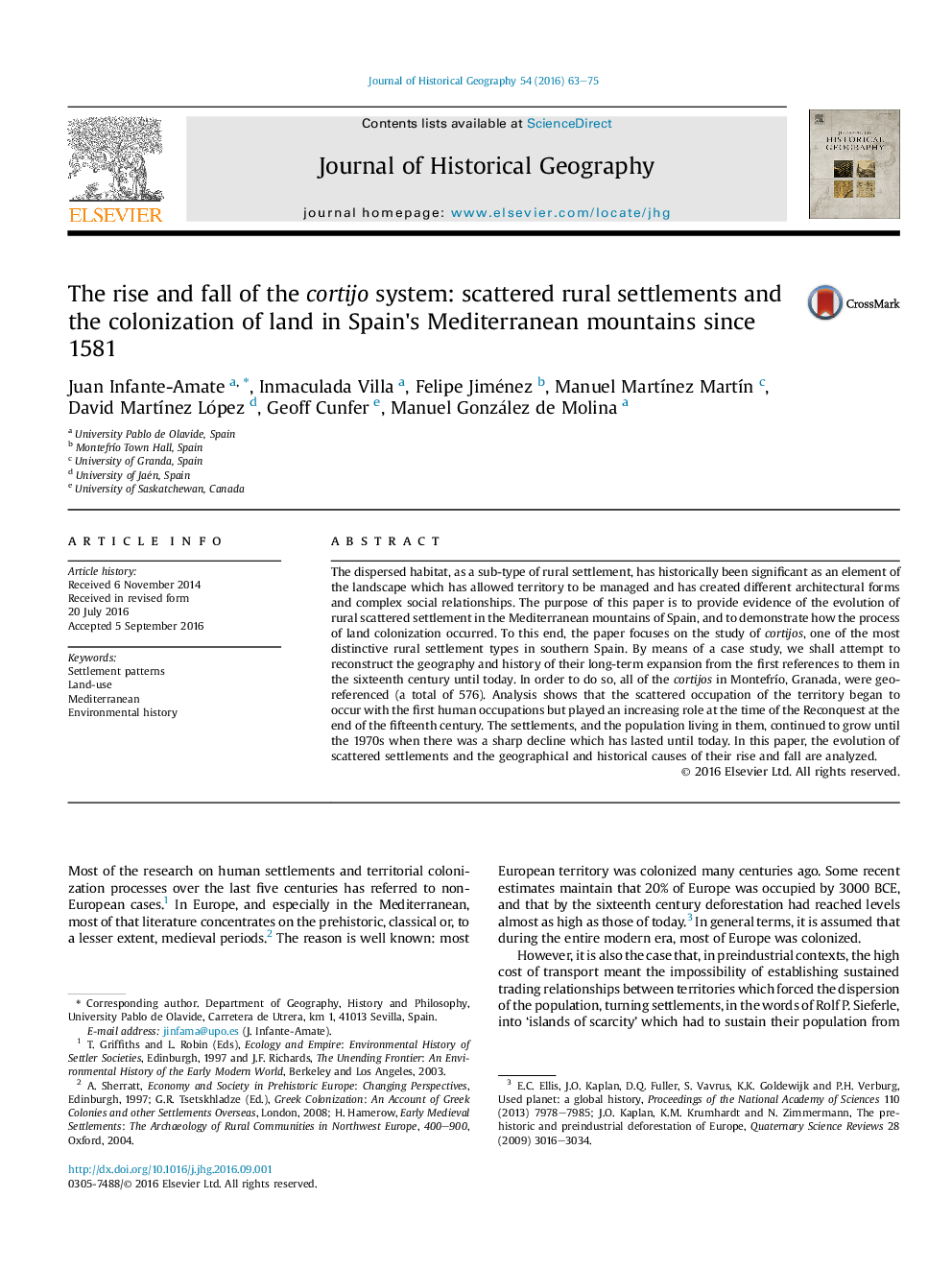| Article ID | Journal | Published Year | Pages | File Type |
|---|---|---|---|---|
| 7447201 | Journal of Historical Geography | 2016 | 13 Pages |
Abstract
The dispersed habitat, as a sub-type of rural settlement, has historically been significant as an element of the landscape which has allowed territory to be managed and has created different architectural forms and complex social relationships. The purpose of this paper is to provide evidence of the evolution of rural scattered settlement in the Mediterranean mountains of Spain, and to demonstrate how the process of land colonization occurred. To this end, the paper focuses on the study of cortijos, one of the most distinctive rural settlement types in southern Spain. By means of a case study, we shall attempt to reconstruct the geography and history of their long-term expansion from the first references to them in the sixteenth century until today. In order to do so, all of the cortijos in MontefrÃo, Granada, were geo-referenced (a total of 576). Analysis shows that the scattered occupation of the territory began to occur with the first human occupations but played an increasing role at the time of the Reconquest at the end of the fifteenth century. The settlements, and the population living in them, continued to grow until the 1970s when there was a sharp decline which has lasted until today. In this paper, the evolution of scattered settlements and the geographical and historical causes of their rise and fall are analyzed.
Related Topics
Social Sciences and Humanities
Arts and Humanities
History
Authors
Juan Infante-Amate, Inmaculada Villa, Felipe Jiménez, Manuel MartÃnez MartÃn, David MartÃnez López, Geoff Cunfer, Manuel González de Molina,
